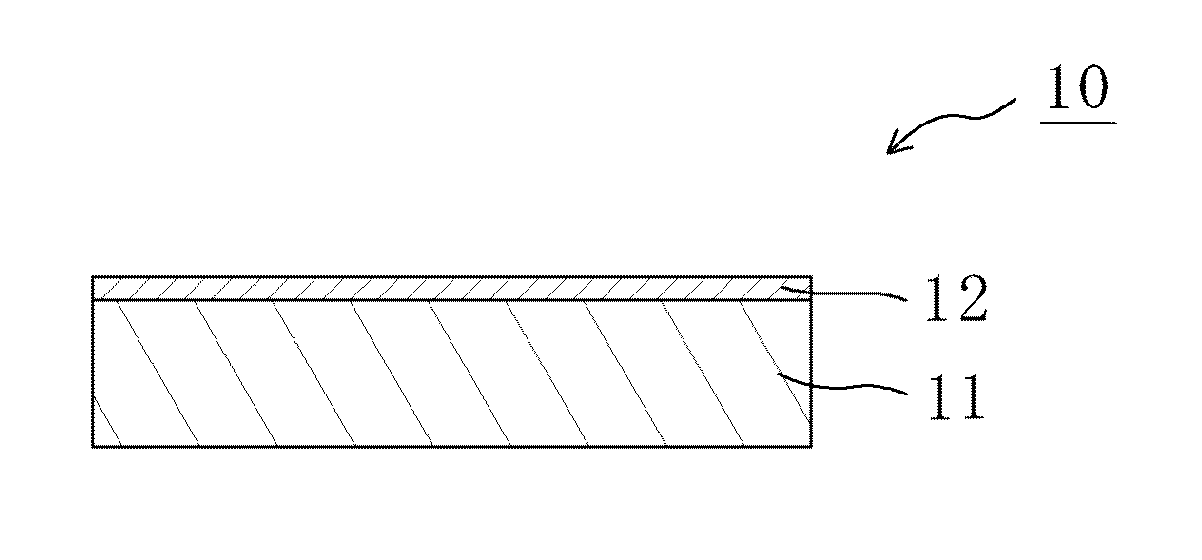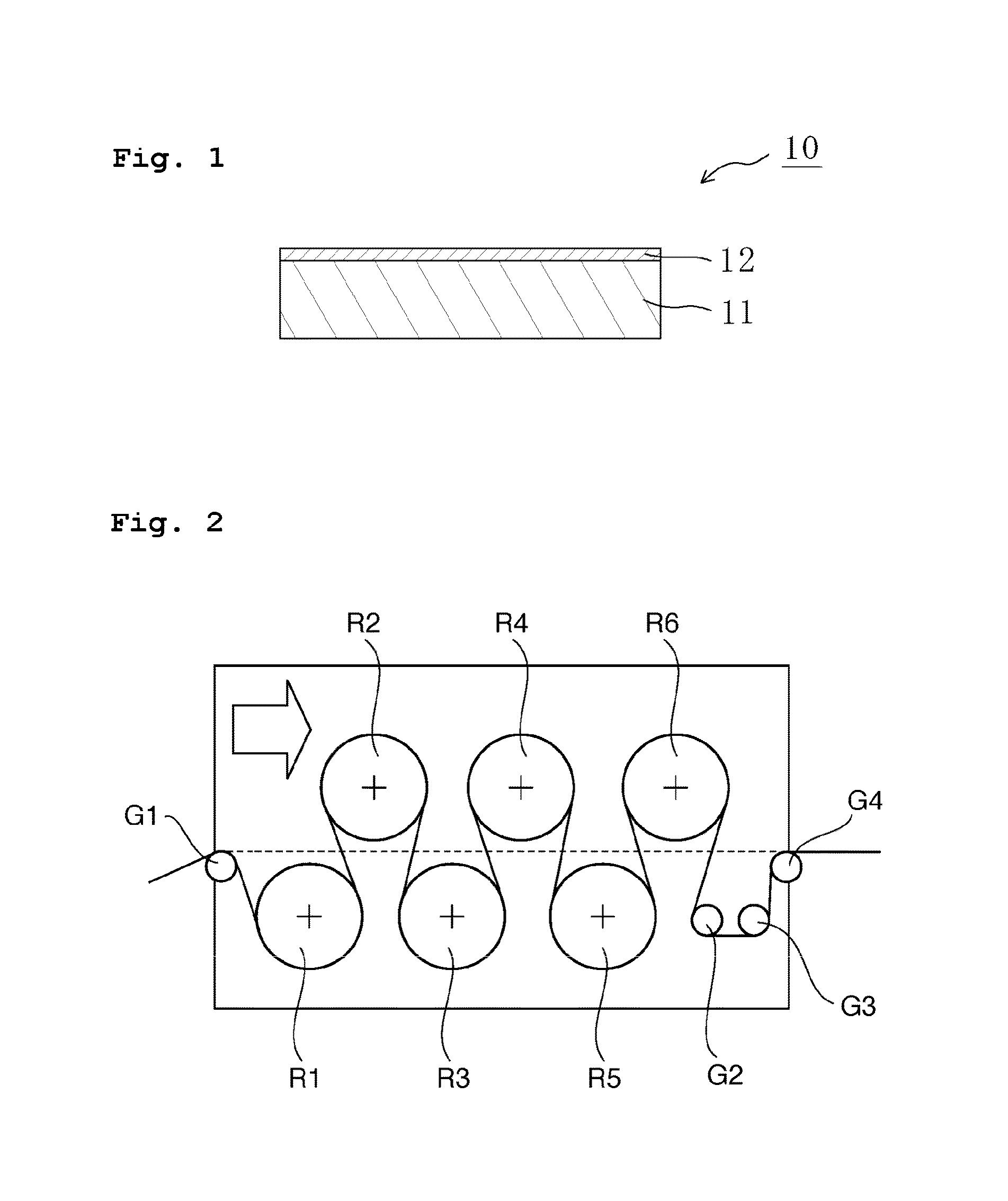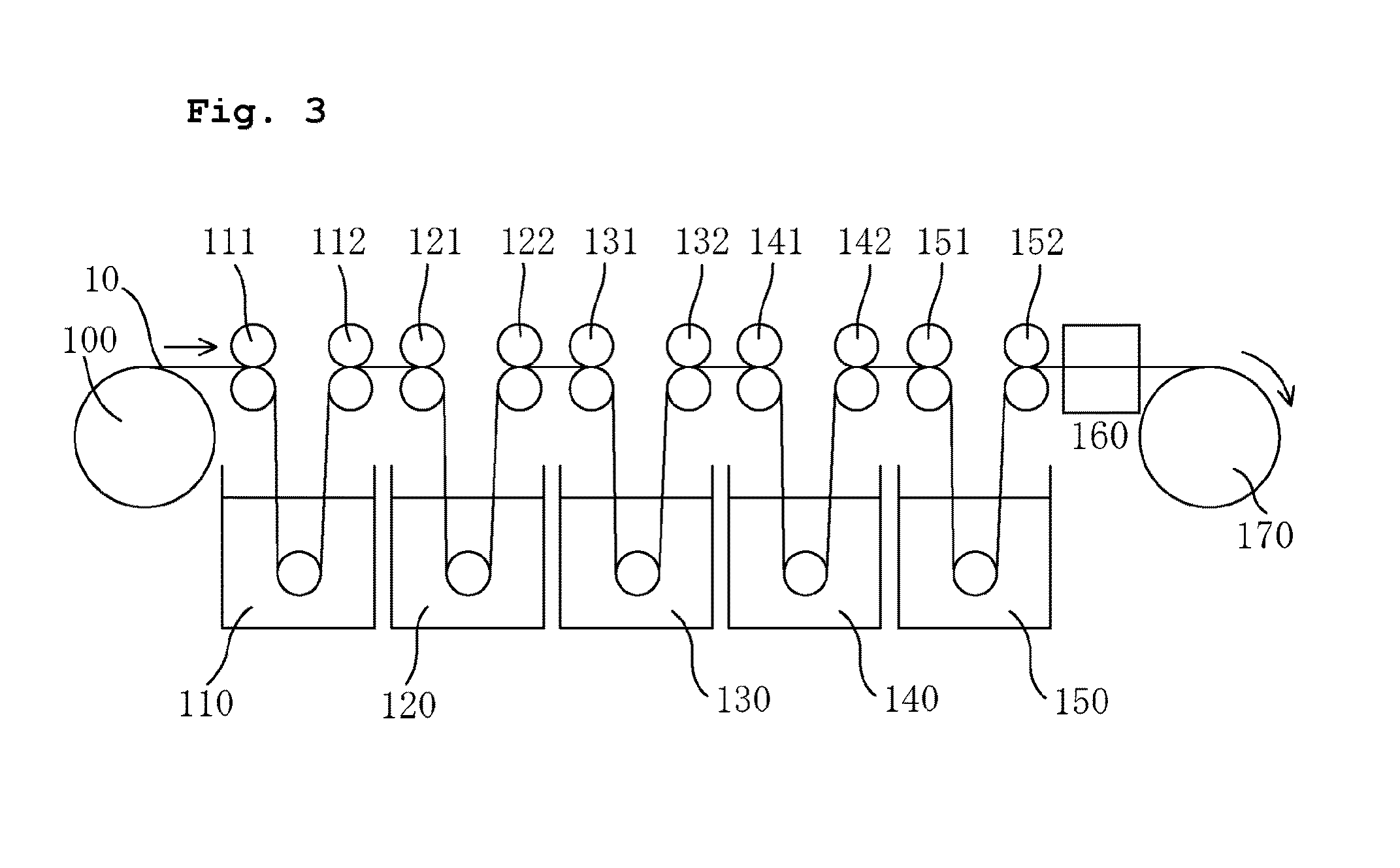Method of manufacturing polarizing film
a technology of polarizing film and manufacturing method, which is applied in the direction of polarizing elements, synthetic resin layered products, instruments, etc., can solve problems such as failure in external appearance, and achieve the effects of suppressing curling, efficiently promoting the crystallization and increasing the crystallinity of thermoplastic resin substrates
- Summary
- Abstract
- Description
- Claims
- Application Information
AI Technical Summary
Benefits of technology
Problems solved by technology
Method used
Image
Examples
example 1
[0085]An amorphous polyethylene terephthalate (IPA-copolymerized PET) film (thickness: 100 μm) having a crystallinity of 0 to 3.9%, a Tg of 70° C., and 7 mol % of an isophthalic acid unit was used as a thermoplastic resin substrate.
[0086]An aqueous solution of a polyvinyl alcohol (PVA) resin (manufactured by The Nippon Synthetic Chemical Industry Co., Ltd., trade name: “Gohsenol (trademark) NH-26”) having a polymerization degree of 2,600 and a saponification degree of 99.9% was applied to one surface of the thermoplastic resin substrate, and was then dried at 60° C. so that a PVA-based resin layer having a thickness of 10 μm was formed. Thus, a laminate was produced.
[0087]The resultant laminate was uniaxially stretched in its longitudinal direction (lengthwise direction) between rolls having different peripheral speeds in an oven at 130° C. (aerial stretching treatment). The stretching ratio at this time was set to 1.8 times.
[0088]Next, the laminate was immersed in an insolublizing ...
example 2
[0095]A polarizing film was produced in the same manner as in Example 1 except that the temperature of each of the conveying rolls R3 to R6 in the drying treatment was set to 85° C.
example 3
[0096]A polarizing film was produced in the same manner as in Example 1 except that the temperature of each of the conveying rolls R3 to R6 in the drying treatment was set to 90° C.
PUM
| Property | Measurement | Unit |
|---|---|---|
| temperature | aaaaa | aaaaa |
| temperature | aaaaa | aaaaa |
| water absorption | aaaaa | aaaaa |
Abstract
Description
Claims
Application Information
 Login to View More
Login to View More - R&D
- Intellectual Property
- Life Sciences
- Materials
- Tech Scout
- Unparalleled Data Quality
- Higher Quality Content
- 60% Fewer Hallucinations
Browse by: Latest US Patents, China's latest patents, Technical Efficacy Thesaurus, Application Domain, Technology Topic, Popular Technical Reports.
© 2025 PatSnap. All rights reserved.Legal|Privacy policy|Modern Slavery Act Transparency Statement|Sitemap|About US| Contact US: help@patsnap.com



